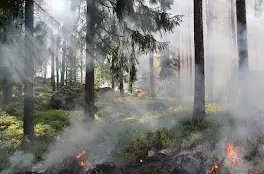I retired to Pennsylvania because we had some family in the area, the cost of living is less than our old home in metropolitan New York, the winters are a little warmer, and it’s not so far away that we had to adjust to a different landscape, or a strange new Lifestyle.
My one fear about moving to Pennsylvania was that there wouldn’t be other older people for us to make friends. I thought: They’ve all moved to Florida! And somehow it seemed dispiriting to be moving into a place where everyone else was moving out.
Well, I actually found there are plenty of people who haven’t moved to Florida. Lots of seniors are still around to populate the Pickleball courts, attend the theater and musical venues, participate in the senior learning programs.
I saw an article last week Are Snowbirds Coming Home? by CNBC’s Kelly Evans. She says the 2020s could mark the end of an era “for the snowbelt-to-sunbelt migration which has been the distinctive feature of U. S. population shifts over the past 50 years.”
Why? The South is getting too hot.
Today’s most popular place to retire is Florida. Warm weather. Low taxes. Lots of golf courses. Plenty of beaches. What’s not to like? Florida is followed by Arizona, then Texas and the Carolinas.
But now Florida and Texas are pummeled by more and more tropical storms. And Arizona is roasting in 110-degree heat.
In addition to heat and storms, many Sunbelt cities are plagued with rising home-insurance premiums and home-repair costs, along with more and more traffic. Also, real-Estate prices have soared, negating much of the cost savings of relocating from the North.
So will retirees really want to move into an area where rising flood waters force them to evacuate? Will they want to bake in the hot sun of the Southwest? And then have to pay extra for the pleasure?
Climate journalist Abraham Lustgarten says that because the climate is getting hotter, Buffalo, NY (believe it or not!), “may feel in a few decades like Tempe, Ariz., does today.” Meanwhile, Tempe will be sweating in 120-degree temperatures.
He also says that fresh water will be in short supply throughout the West and much of the South. Megafires will threaten the Sunbelt from Georgia to Texas to California.
 |
| The Old Sunbelt |
Rising sea levels will chew up shorelines along the East and Gulf coasts, swamping many areas and infiltrating underground aquifers. One estimate projects high water will force 13 million Americans to move away from the coast.
So now experts predict the recent migration of retirees toward the coasts, and toward warmer weather, will reverse. Instead of retiring to Florida or Arizona, people will head north. They will seek cooler summers. They will avoid fire-prone regions and shy away from low-lying areas subject to flooding.
So where are people going to retire? Kelly Evans suggests the Midwest, where the cost-of-living remains more affordable, winters will be less severe, and summers will offer beautiful 80-degree afternoons. She says Cleveland may be a draw for future retirees.
Jesse Keenan, a Harvard climate professor, points to Duluth, Minn. as a promising location. The land of a thousand lakes already ranks high on many Retirement lists for its low crime rate and great medical care (think Mayo Clinic).
 |
| The New Sunbelt |
Lustgarten also says the migration from California to coastal Oregon and Washington will likely continue as people look for a more temperate climate. And the Northwest poses less risk from rising sea levels.
Wisconsin and Michigan offer a climate that will only get more temperate, verdant and inviting. Lustgarten predicts a renaissance for currently downtrodden Detroit.
Vermont, Maine and upstate New York may also attract more retirees, for the same reasons. Will Buffalo become the new Boca Raton? Syracuse the new San Diego?
Maybe that’s getting ahead of things. But I did see one figure recently. After experiencing small population declines earlier in the 2000s, Pennsylvania is starting to grow again, led by gains in the area where I live, the southeastern part of the state around Philadelphia.
Which reminds me. Last winter, for the first time, we didn’t have to call out the snowplow, not even once.
Notifications